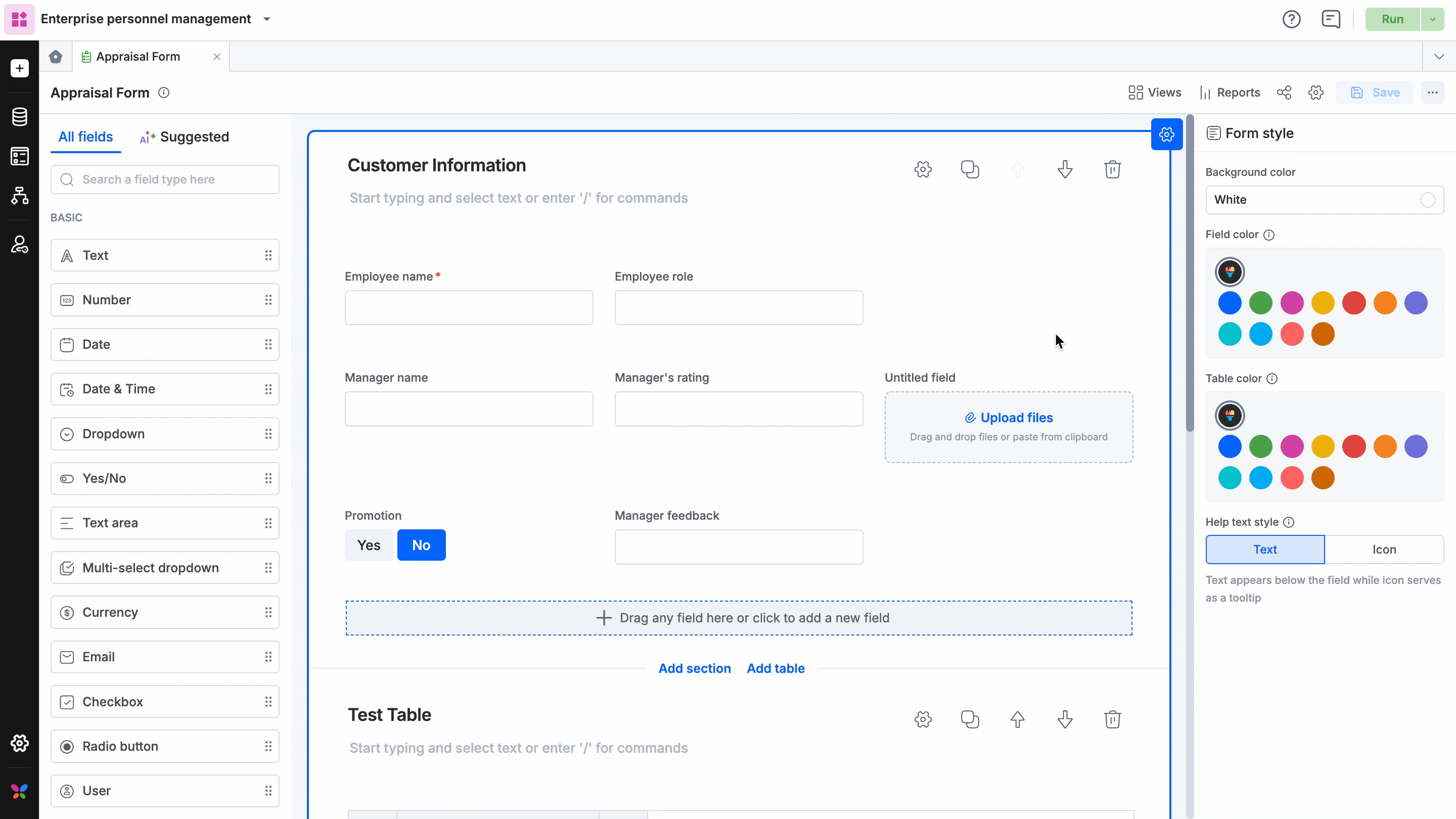Data table view
A data table view displays your form data as a table, with the dataform fields displayed as column headings and the data gathered by each field displayed as rows.
Tip:
Assume you're developing an app to collect and manage employee data. You can collect data using a dataform and then analyze it using a data table view. You can then manage and use this view within a page.
Creating a data table view
- Navigate to the dataform, and click Views.
- Click + New view.
- In the Create view popup, click Data table and Create.

Configuring the data table
You can configure the data table view using the following settings:
General settings
Under Name, enter a table name of your choice. By default, the table name will be the name entered while creating the data table.
Table settings
- Click Add columns to add columns to your data table view. You can choose the columns from the form fields or the system fields. Click Select all to add all the fields as columns in the table.
For example, let us consider your dataform consists of fields such as Employee ID, Name, Designation, Manager, Blood Group, CTC, Date of Joining, Hobbies, etc. If you wish to hide CTC and Hobbies in the view, you can click Select all fields and then specifically delete these fields to show only the other data. This is helpful when you have large chunks of data to be shown. Alternatively, if you wish to show only a few fields such as Employee ID, Name, and Designation, select the specific fields.
- In Manage columns, the columns can be rearranged by dragging and dropping and can be deleted if the columns are not required.

Data filter
In Data filter, using Advanced filters, you can determine the conditions to show a particular data. In an advanced filter, you can select a field, select an operator such as Equal to, Not equal to, Part of, etc, select if it is either a value or a field, and match it with a specific value or field. You can also add conditions such as AND/OR to the filters.
Here, we have filtered the data based on appointment days that are not Saturday and Sunday.

Quick filter
A Quick filter helps you view the filtered data in a separate tab. The filters added can be rearranged by dragging and dropping. Quick filters can also be configured within a page where the data table view is used. It can be turned on/off inside the page.
For example, here we have added a quick filter to filter all the employees under a specific department and viewed it in a page.

Bulk action
Using Bulk action, you can add JavaScript code to your data table. You can select all rows or specifically select the rows to perform these actions. You can add one or more bulk actions and reorder them if required.

Here, we have created a bulk action to show the blood group composition of the employees using reports.

Sort
You can sort the data by selecting a column for which you want to apply the sort. The data can be sorted either in ascending or descending. Sorting can also be done by clicking the down arrow button(
Import
Using Import CSV, you can import large amounts of data into your data table. Click here to know more about the feature.
